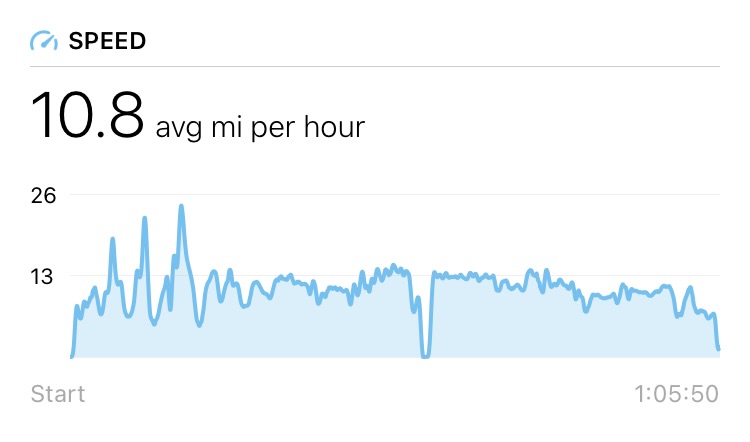Goals and measurements of those goals are one of those hard things to get right in business because there are just so many things to get done and so many ways to measure them.
This year I’ve decided to sign up for a sprint triathlon (350 meter swim, 10 mile bike, and 3 mile run) and thought I would take a stab at using this sprint triathlon as a vehicle to draw some analogies between personal and company goals and how to use Data to measure them.

Overall Goal
Typically the overall goal of a company is something like “make money” and my personal goal is to “be healthy”. Neither “make money” nor “be healthy” is a particularly actionable goal. There are too many ways to approach them. However they are useful constructs to keep as a backdrop through the goal setting, measurement and execution processes. The reason it is important is because you should periodically do a pulse check to see if generally if the more granular goals and strategies are still relevant.
“Mountain to Climb” Goal

A “mountain to climb” is a more defined goal on route to the overall goal. Characteristics of a good “mountain to climb” goal are:
- Timeframe to accomplish the goal is relatively short term. Longer than 3 months, shorter than 2 years. It really helps if there is an external driving force that dictates the timeframe (conference, investor meeting, a race, etc)
- Easy to know if the goal was accomplished. There is a binary met/did not meet.
- Should be hard and exciting to work towards. Success is by no means certain, however not impossible.
The sprint triathlon is my “mountain to climb” personally this year. The race is 5 months away and a date I cannot move. It’ll be easy to know if I accomplish it – on race day I will have either finished it or not. And this is definitely hard for me. Before I made this my “mountain to climb” biking 10 miles was not an issue for me (but 20 miles was), I haven’t swam since middle school (but my kids swim – I knew I could train with them), and I never ran further than 2 miles in my life (but I walk a TON).
If I set a marathon or Ironman as my “mountain to climb” my motivation to accomplish it would quickly diminish. They would be too big for me. Conversely if I set my goal to be something like finish a 1 mile run that’s not big enough to make any meaningful change to progress along the “overall goal”
A good pressure test I do for “mountain to climb” goals both personally and professionally is ask “Is this realistically achievable?” and the answer should be a hesitant “yes”. A definitive “yes” or “no” means it’s too easy or too hard and should be adjusted.
Inside a company “mountain to climb” goals can be yearly goals, meaningful projects or both. The most important part is that they meet characteristics above.
Operational Measurements
Now that there is a “mountain to climb” goal we need a way to track towards this goal. It’s important to know that the measurements we take for tracking are not the same as our goal. They are different numbers for different reasons.
An Operational Measurement is something you can check as you progress through the operations towards the goal. For my sprint triathlon these are the sorts of things I track during my workouts.
- Number and type of workouts per week
- Heart rate during workout
- Speed, duration and length of the swim/bike/run

Those are the measurements I can use to tweak my daily and weekly activities. Generally I want a consistent number of workouts, my heart rate is going to depend on the workout, and the speed, duration, length I want to see gradually increase.
For a company these are going to depend on your department, however will probably look familiar company to company. Call center metrics, marketing statistics, server health check, sales targets, etc are all buckets for these metrics. However going to repeat these should not be the goal. The reason that is important is there is a tendency sometimes to over index on these numbers and typically as long as there is confidence that directionally they are correct they will do the job of helping you guide day to day.
Health Checks
The Operational Measurements are different though than Health Checks. Health Checks should not dictate daily activity, instead they should be indicators of overall health. For me they are literal health checks weight, BMI, blood pressure, etc. They fluctuate day to day so no need to stress about them daily. Weekly, monthly, quarterly, or yearly are typically fine.
In a company these will be the more standard Financial Metrics, burn rate, EBITA, cash flow, etc. There should be some idea of what “healthy” looks like for the company and if things start to look unhealthy they absolutely should be managed, however the driver for the change will be more through the Operational Measurements.
Closing
There are books and such written about all the above and they may delve into such TLA (Three Letter Acronyms) as OKR (Objectives and Key Results), KPI (Key Performance Indicators) however hopefully the above is a useful framework to think through how to use these various goals and measurements.
